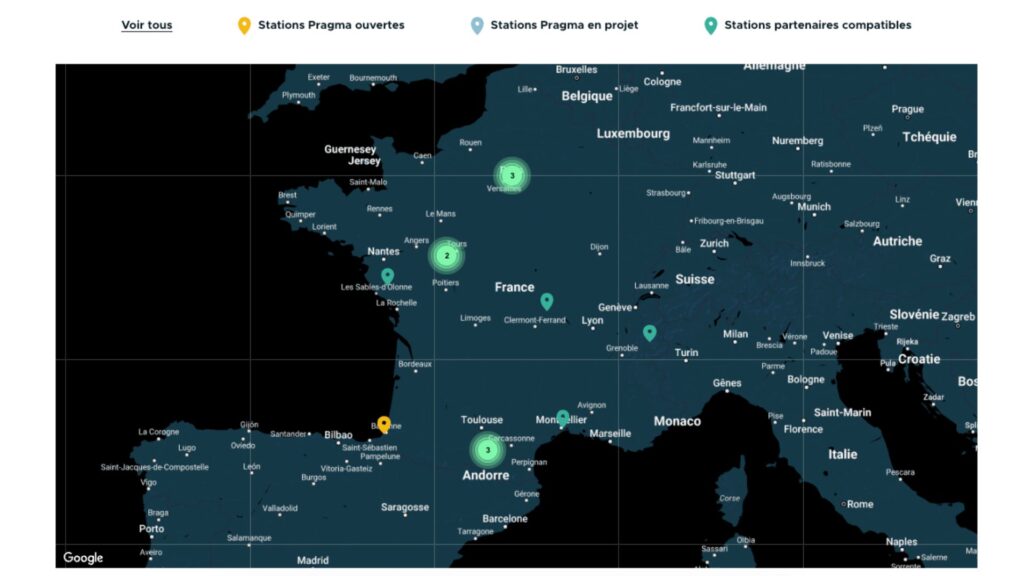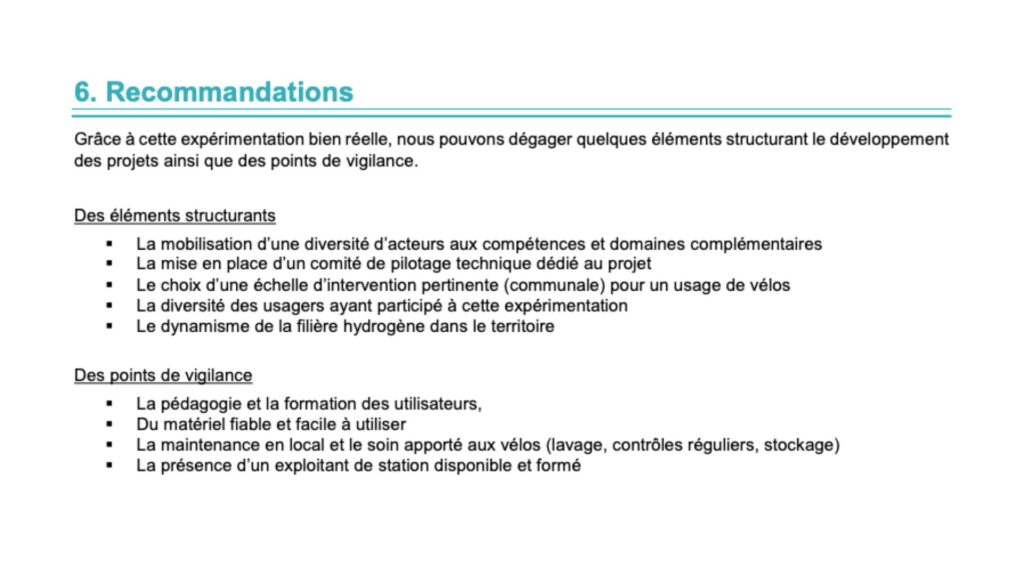Aviation, Car, Scooter: Hydrogen is part of the mobility landscape. It was therefore not surprising that he invested the territory of the cycle. Is it lower with the environmental impact sold, is hydrogen alternative to classic VAE and solutions in finding more sustainable mobility?
Hydrogen wheels work thanks to a fuel cell, which is also called a hydrogen battery. These wheels, like the classic VAE, have an electric motor. This is not supplied with a lithium battery, but with this battery that transforms electricity hydrogen. Therefore, these wheels also release cassettes (or tanks) that contain the hydrogen.
If these hydrogen wheels represent an interesting innovation, they will arouse several questions about their relevance compared to classic electric wheels with lithium battery. On paper, the hydrogen bike offers significant advantages, but in 2024 there is a niche technology in 2024.
Hydrogen wheel, more environmentally friendly alternative to lithium batteries?
We often talk about ecology when we talk about the mobility of the future. It seems that hydrogen for its defenders is more environmentally friendly. This means that this remains an observation to be qualified – let’s say rather that the environmental impact is not carried out in the same place.
The lithium It has a greater ecological impact than hydrogen – the ecological aspect of the hydrogen wheel is also one of the motivations observed during the Bhyke experiment performed from 2017 to 2019 Ademe. Its extraction leads to the main environmental and ethical problems: excessive water consumption during its extraction, mining operations participating in ecosystems degradation and whose management methods do not always respect human rights, non -renewable sources, etc. Lithium also represents important recycling problems where components are components Hydrogen system easier.
Non -toxic gas, l‘hydrogen It represents a cleaner and long -term durable energy potential. It is used only in the fuel cells on the bike and only creates water vapors and does not release greenhouse gas. But unlike lithium, which must be extracted, hydrogen rarely exists in a natural state. It must therefore be produced, which also causes energy expenses.
Let us remind yourself, as such that The hydrogen production is still dependent on fossil fuels. “Of the 70 million tons of hydrogen (except for production as what -produced) produced every year around the world, including one million in France, 48 % comes from natural gas, 28 % oil and 23 % of coal, according to international energy agency data” (Source: Note: ° 25 scientific notes from the Parliamentary Office for the assessment of scientific and technological decisions, April 2021). The note determines that there are still other production techniques that do not use hydrocarbons, but whose use is limited due to their costs, their complexity, their yield, etc.
From a holistic point of view, the ecological evaluation of hydrogen deserves to be nuance: if its production method does not know the revolution that gets from the hydrocarbons, it will never be more green than decarbonized electricity.

Attractive loading time but still too few charging stations
Unlike electric wheels that require several hours to recharge batteries, Hydrogen wheels can be recharged in a few minutes. The pioneer in this area, the French company Pragma Mobility, which sold the first hydrogen wheel, announces 2 minutes of charging. Yes, but …
A catch that slows down the acceptance of the hydrogen wheel in France? Network poverty charging infrastructure. Availability and comfort therefore remains an important problem for users today. It is also one of the conclusions and paths to improve Bhyke experimentation.

Towards the rechargeable hydrogen wheels at home?
Several brands have developed hydrogen wheels for recharging at home. This is the case of Youon, a Chinese manufacturer who has already deployed a self -service stations of hydrogen wheels. The company produces a compact production station for home use (Q100), recharge bottles and fuel cells.
But we don’t scream the victory immediately! The charging time of the bottle via the station is approximately 5 hours and its electricity consumption clearly numes the ecological dimension of the system. It is difficult to see the benefits compared to the loading of the classic battery connected to the wall output.
Regarding the autonomy announced brand for the load, it is only 40 to 60 km. For maximum assisted speed 23 km/h … the same load time of cartridge (5 hours) and autonomy (50 km) for hydrogen bike Hubur Habur H2 – whose place really leaves something required – in the living room Tech 2024.
Therefore, these devices have no specific advantage over traditional VAEs that rise up to 25 km/ha can travel up to 120 km depending on the chosen mode.
The price of the hydrogen wheel will brake more than one
In 2023, the cost of the electric hydrogen wheel remains particularly high, For the “show”, which are rather basic. The price, which is undoubtedly justified years of research and development and development of new systems, but which leaves the taste too small technically. For example, the H2 from Huburu blessing is worth 5,500 euros (with two candies). The price that has something to do.

For comparison, for 4,399 euros you can buy Monday 27.6 mustache. This VAE has a Bosch power line, belt drive, Envoloo transmission with continuous variability and an autonomy of 115 km autonomy. A AXA Anti -Theft integrated into the frame!
But there is hope! The NEO hydrogen model proposed Pragma Mobility differs from other models using good autonomy: you can go up to 150 km with one load. The brand refuses several models of benefits adapted to different needs. NEO bike still stands in pre -order still 5,690 euros.
In short, at this price we do not even have the right to elegant design. Electric wheel frames are still impressive. In addition to the construction, the hydrogen system also requires the same impressive weight and which is not without a result for autonomy or practicality of the machine. This is also one of the problems that users who were able to test old hydrogen models (since then) with the Byke experiment: ‘ The geographical relief of the cities where the demonstrations take place, forces users to systematically require electrical assistance due to the weight of the wheel. »»
Other costs that can be expected to increase the note
It will be necessary above the price of the bike Also calculate the cost of a monthly subscription or the cost of recharging on the station, or at home. It takes 130 € ht rechargeable cassette in Huburu. And then we can’t wait to see compatibility problems between cassette models.
Hydrogen technology is still new in the wheel sector, which makes maintenance and repair more complex and costly. You will also have to find a specialized and well -known repairman of this technology.
In short, the Lithium battery VAE still has a clear future
This technology promising paper is still in development and requires improvements to largely received, especially in terms of production modeRecharge, vehicle performance and costs. In other words, there is no interest in considering the hydrogen wheel.

It seems more likely that it will exceed the hydrogen wheels in LDD with different subscription options or self -service in communities to gradually replace the VAE fleets. Hydrogen is in the monuments of the national strategy for the development of decarbon hydrogen in France (Plan of France 2030).

In France, Pragma Mobility already examines these different traces. Biarrote has equipped several fleets of hydrogen bikes. In the article on Franceble, its founder Pierre Forte explained that the company was to offer an offer of LDD in 2025.
The case to follow.

